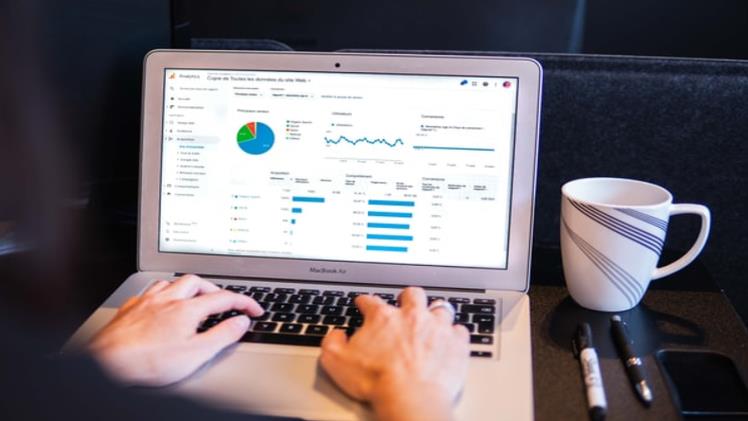With the advent of big data, businesses have been forced to change how they operate. No longer can they rely on small data sets to make decisions. They must now take into account the vast amount of data that is available to them. This has led to a new era of decision-making for businesses. Keep reading to learn more about the rise of big data and its impact on business.
What is big data?
Big data analytics is collecting and analyzing large and varied data sets. The term often refers to data mining, predictive analytics, and data science to extract insights from data. Big data has been around for a while, but it has only recently become a buzzword. This is because the technology needed to handle big data (such as powerful computers and data storage) was unavailable until recently. The rise of big data has been driven by the growth of the internet, social media, and mobile devices.
The growth of big data has had a significant impact on business. Companies can now use big data to understand their customers better, identify new markets, and improve their products and services. Big data can also help companies reduce costs by identifying inefficiencies.
What are the benefits of big data for businesses?

Big data has undoubtedly had a significant impact on businesses, and the benefits of big data are clear. Here are some of the critical benefits of big data for companies. Big data can help enterprises to understand their customers better. By analyzing customer data, companies can gain a deeper understanding of customer behavior, preferences, and needs. This information can be used to create more effective marketing campaigns and develop products and services that meet customers’ needs.
Big data can help businesses improve their operations. By analyzing business data, companies can identify inefficiencies in their operations and find ways to improve them. Big data can also help companies to compete more effectively. Businesses can develop strategies that give them a competitive edge by having access to detailed information about competitor activities.
How will big data affect the future of business?
Big data has already begun to change the way businesses operate, and the future of big data is only going to increase this impact. To take advantage of big data, companies need to create a big analytical data strategy that includes the following three components: collection, analysis, and action. Collection means acquiring as much relevant data as possible to understand what is happening within the business and its environment. Analysis means examining the data to identify patterns and trends.
Action means using this information to make better decisions that will improve performance. Over time, we can expect big data will become even more critical for businesses as they strive for greater efficiency and effectiveness in everything they do.
How do you set up big data analytics?
There are a few key things to remember when setting up big data analytics. First, you need to make sure that you have the necessary infrastructure in place to support big data analytics. This includes a robust data management system to store and organize your data, as well as powerful analytics tools to analyze and make sense of all that data. Once you have the necessary infrastructure in place, you need to identify the business problems that you want to solve with big data analytics. Big data analytics can solve various business problems, such as reducing churn, improving customer engagement, increasing sales, and improving operational efficiency.
Once you know what problem you want to solve, you need to gather all the data you need to solve that problem. Next, you need to make sure that you have the right team in place to manage and operate your big data analytics system. This includes data scientists and analysts who can mine your data for insights, as well as engineers and developers who can build and maintain the infrastructure needed to support big data analytics. If you don’t have the necessary skills in-house, you may need to outsource some of these functions to a third-party provider. This can be a costly proposition, but it may be worth the investment if you’re looking to get the most out of your big data system.
Once the system is up and running, it’s essential to continually monitor and optimize it to ensure you’re getting the most out of your investment. This includes tracking key performance indicators (KPIs) and making necessary adjustments to ensure that the system meets your specific needs. By following these steps, you can build a successful big data analytics system that meets your particular needs and helps you achieve your business goals.
What industries use big data analytics?
Almost every industry can benefit from big data analytics, but a few in particular stand to gain the most from the technology. These industries include healthcare, retail, and telecommunications. The healthcare industry constantly collects patient data, from their medical records to their vital signs. By using big data analytics, healthcare providers can get a better understanding of how to treat patients, which treatments are most effective, and even how to prevent diseases from spreading.
For example, by analyzing a patient’s genomic data, healthcare providers can develop a treatment plan tailored to the patient’s specific genetic makeup. This customized approach can improve the patient’s chances of responding to treatment and help avoid adverse reactions to medication. Big data can also be used to improve the accuracy of diagnosis. By analyzing a patient’s symptoms and medical history, as well as data from health monitoring devices, healthcare providers can get a more accurate picture of the patient’s condition.
Retailers are constantly collecting data on customer behavior, from what items they’re buying to how often they’re visiting the store. By using big data analytics, retailers can get a better understanding of what products to stock, what promotions to run, and even how to layout their stores. Telecommunications providers collect data on how their customers are using their services. By using big data analytics, providers can become knowledgeable about services their customers are using the most, where they’re having problems, and even how to optimize their networks.

